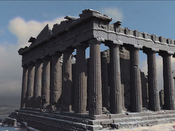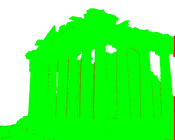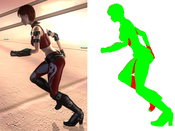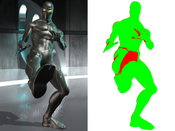Information
- Publication Type: Other Reviewed Publication
- Workgroup(s)/Project(s):
- Date: 2011
- Booktitle: EUROGRAPHICS 2011 State of the Art Reports
- Location: Llandudno UK
- Publisher: Eurographics Association
- Pages: 101 – 126
Abstract
Nowadays, there is a strong trend towards rendering to higher-resolution displays and at high frame rates. This development aims at delivering more detail and better accuracy, but it also comes at a significant cost. Although graphics cards continue to evolve with an ever-increasing amount of computational power, the processing gain is counteracted to a high degree by increasingly complex and sophisticated pixel computations. For real-time applications, the direct consequence is that image resolution and temporal resolution are often the first candidates to bow to the performance constraints (e.g., although full HD is possible, PS3 and XBox often render at lower resolutions).In order to achieve high-quality rendering at a lower cost, one can exploit emph{temporal coherence} (TC). The underlying observation is that a higher resolution and frame rate do not necessarily imply a much higher workload, but a larger amount of redundancy and a higher potential for amortizing rendering over several frames. In this STAR, we will investigate methods that make use of this principle and provide practical and theoretical advice on how to exploit temporal coherence for performance optimization. These methods not only allow us to incorporate more computationally intensive shading effects into many existing applications, but also offer exciting opportunities for extending high-end graphics applications to lower-spec consumer-level hardware.
To this end, we first introduce the notion and main concepts of TC, including an overview of historical methods. We then describe a key data structure, the so-called emph{reprojection cache}, with several supporting algorithms that facilitate reusing shading information from previous frames. Its usefulness is illustrated in the second part of the STAR, where we present various applications. We illustrate how expensive pixel shaders, multi-pass shading effects, stereo rendering, shader antialiasing, shadow casting, and global-illumination effects can profit from pixel reuse. Furthermore, we will see that optimizations for visibility culling and object-space global illumination can also be achieved by exploiting TC.
This STAR enables the reader to gain an overview of many techniques in this cutting-edge field and provides many insights into algorithmic choices and implementation issues. It delivers working knowledge of how various existing techniques are optimized via data reuse. Another goal of this STAR is to inspire the reader and to raise awareness for temporal coherence as an elegant tool that could be a crucial component to satisfy the recent need for higher resolution and more detailed content.
Additional Files and Images
Weblinks
No further information available.BibTeX
@inproceedings{scherzer2011c,
title = "A Survey on Temporal Coherence Methods in Real-Time
Rendering",
author = "Daniel Scherzer and Lei Yang and Oliver Mattausch and Diego
Nehab and Pedro V. Sander and Michael Wimmer and Elmar
Eisemann",
year = "2011",
abstract = "Nowadays, there is a strong trend towards rendering to
higher-resolution displays and at high frame rates. This
development aims at delivering more detail and better
accuracy, but it also comes at a significant cost. Although
graphics cards continue to evolve with an ever-increasing
amount of computational power, the processing gain is
counteracted to a high degree by increasingly complex and
sophisticated pixel computations. For real-time
applications, the direct consequence is that image
resolution and temporal resolution are often the first
candidates to bow to the performance constraints (e.g.,
although full HD is possible, PS3 and XBox often render at
lower resolutions). In order to achieve high-quality
rendering at a lower cost, one can exploit emph{temporal
coherence} (TC). The underlying observation is that a higher
resolution and frame rate do not necessarily imply a much
higher workload, but a larger amount of redundancy and a
higher potential for amortizing rendering over several
frames. In this STAR, we will investigate methods that make
use of this principle and provide practical and theoretical
advice on how to exploit temporal coherence for performance
optimization. These methods not only allow us to incorporate
more computationally intensive shading effects into many
existing applications, but also offer exciting opportunities
for extending high-end graphics applications to lower-spec
consumer-level hardware. To this end, we first introduce
the notion and main concepts of TC, including an overview of
historical methods. We then describe a key data structure,
the so-called emph{reprojection cache}, with several
supporting algorithms that facilitate reusing shading
information from previous frames. Its usefulness is
illustrated in the second part of the STAR, where we present
various applications. We illustrate how expensive pixel
shaders, multi-pass shading effects, stereo rendering,
shader antialiasing, shadow casting, and global-illumination
effects can profit from pixel reuse. Furthermore, we will
see that optimizations for visibility culling and
object-space global illumination can also be achieved by
exploiting TC. This STAR enables the reader to gain an
overview of many techniques in this cutting-edge field and
provides many insights into algorithmic choices and
implementation issues. It delivers working knowledge of how
various existing techniques are optimized via data reuse.
Another goal of this STAR is to inspire the reader and to
raise awareness for temporal coherence as an elegant tool
that could be a crucial component to satisfy the recent need
for higher resolution and more detailed content. ",
booktitle = "EUROGRAPHICS 2011 State of the Art Reports",
location = "Llandudno UK",
publisher = "Eurographics Association",
pages = "101--126",
URL = "https://www.cg.tuwien.ac.at/research/publications/2011/scherzer2011c/",
}
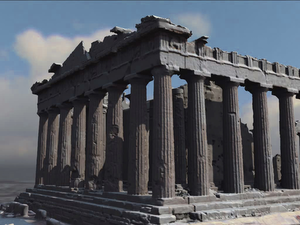

 pdf
pdf